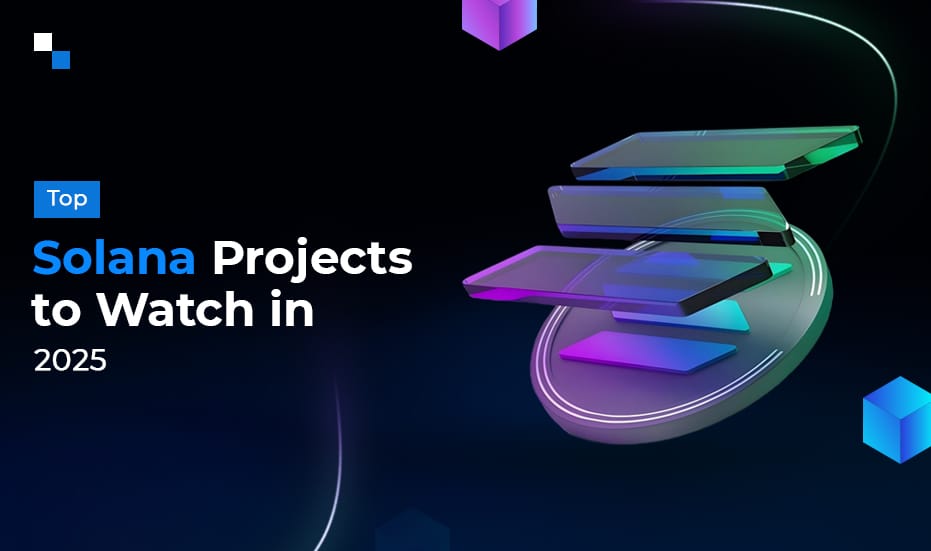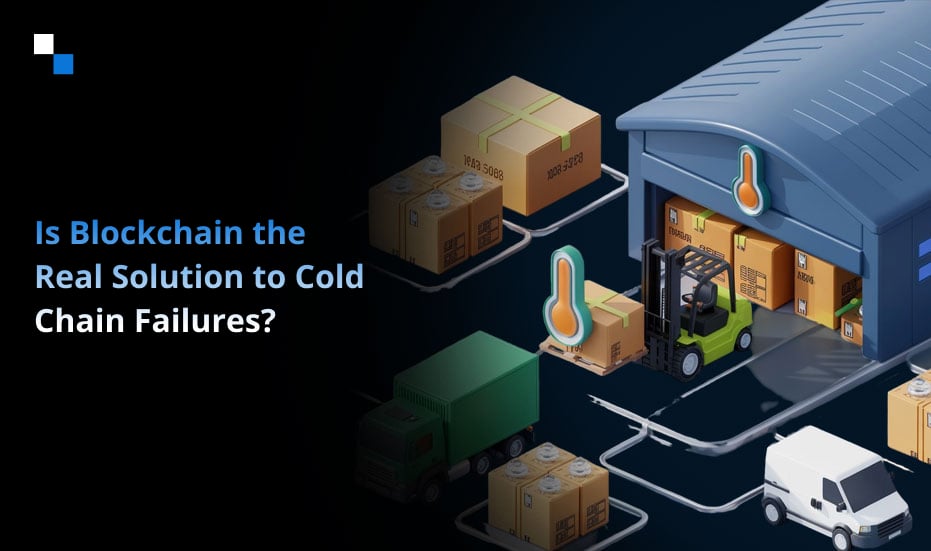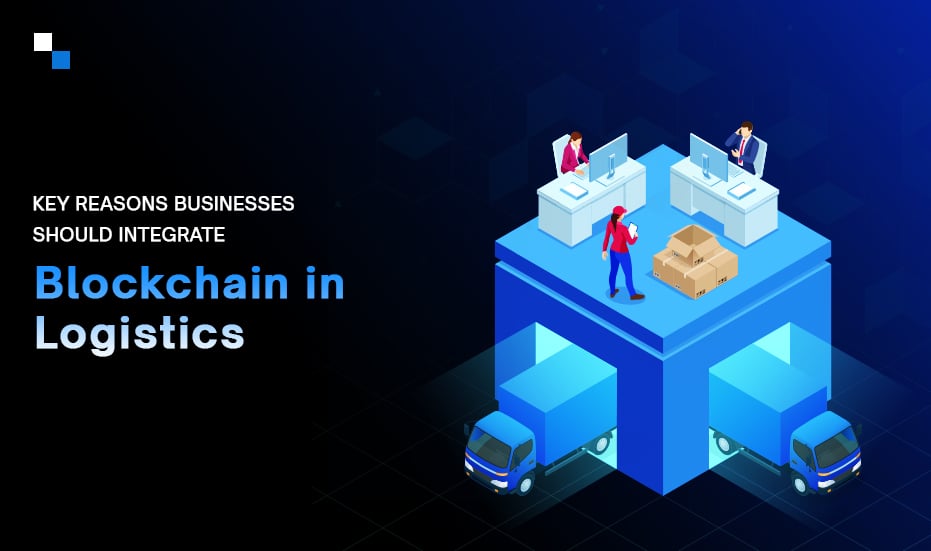
How to Create Your Own Gacha Game in 2 Weeks
December 11, 2024
Your Guide To Successful Centralized Crypto Exchange Development in 2025
December 11, 2024Imagine a bustling marketplace where transactions are slow, fees are high, and the overall experience is cumbersome. Now, imagine a marketplace powered by cutting-edge technology, where transactions are lightning-fast, fees are minimal, and the experience is seamless. This is the promise of blockchain technology, and Solana is emerging as one of its brightest stars.
The Rise of Solana: A Snapshot
From DeFi to NFTs and gaming, Solana has consistently outperformed expectations, becoming a cornerstone for developers and enterprises seeking high-speed blockchain solutions. Over the last few years, Solana has solidified its place as a preferred blockchain for scalable, decentralized applications. Let’s have a look at some statistics depicting Solana’s rise and the key drivers behind its hype.
Top Statistics Depicting Solana’s Rise
- Developer Growth: A tenfold increase in active developers from 2020 to 2023, with over 3,300 contributors.
- Transaction Volume: Over 40 million daily transactions in Q4 2023, far exceeding most other blockchains.
- DEX Volume: Surpassed $100 billion in monthly decentralized exchange volume in November 2023, outpacing Ethereum’s $55 billion.
- User Engagement: Maintains over 107 million monthly active addresses, reflecting its popularity.
Key Drivers Behind Solana’s Hype
-
Unmatched Scalability
At the heart of Solana’s appeal is its Proof of History consensus mechanism, which processes transactions at unparalleled speeds. While traditional blockchains like Ethereum struggle with congestion, Solana can handle up to 65,000 transactions per second with minimal latency. For enterprises, this means:
- Efficient operations: No delays, even during high transaction volumes.
- Cost savings: Transaction fees are often less than $0.01, making it ideal for microtransactions in industries like gaming and finance.
-
Developer-Friendly Ecosystem
Solana provides comprehensive resources, including the Solana SDK and robust APIs, enabling faster development cycles. Its commitment to developer growth is evident through programs like:
- Hackathons: Solana’s regular hackathons attract top global talent.
- Grants and Incentives: In 2024, Solana Foundation announced new funding initiatives to support startups building innovative dApps.
This developer-first approach is attracting companies across sectors, from fintech to supply chain management.
-
Cross-Chain Capabilities
Solana’s Wormhole Protocol has addressed the issue of blockchain interoperability, allowing seamless communication between Solana and other major blockchains like Ethereum and Binance Smart Chain. This feature unlocks massive potential for enterprises to develop multi-chain solutions and reach broader audiences.
-
Energy Efficiency
Sustainability has become a key factor for businesses adopting blockchain. Solana is not only fast but also energy-efficient, consuming significantly less energy than older blockchains like Bitcoin and Ethereum. In a world driven by ESG compliance, this makes Solana an attractive option for enterprises.

Top Solana Projects in the Market
1. Solend
Solend is an algorithmic, decentralized lending and borrowing protocol built on the Solana blockchain. Being one of the top Solana projects, it allows users to lend their crypto assets to earn interest or borrow assets by providing collateral.
Key Features of Solend
- Decentralized: No central authority controls the platform, ensuring transparency and security.
- Algorithmic Interest Rates: Interest rates are automatically adjusted based on market demand and supply.
- Overcollateralization: Users must deposit more collateral than the value of the loan to mitigate risks.
- Liquidation Mechanism: If a borrower’s collateral value falls below a certain threshold, their position can be liquidated to repay the loan.
- SLND Token: The native token of Solend, used for governance and potential rewards.
How Solend Works
- Depositing Assets: Users can deposit supported crypto assets into Solend’s lending pools.
- Earning Interest: By depositing assets, users earn interest on their holdings. The interest rate is determined algorithmically based on market demand.
- Borrowing Assets: Users can borrow assets by providing collateral. The amount they can borrow depends on the value of their collateral.
- Paying Interest: Borrowers pay interest on their loans, which is calculated based on the current interest rate.
- Liquidation: If a borrower’s collateral value falls below a certain threshold, their position can be liquidated to repay the loan.
2. Raydium
Raydium is a high-performance decentralized exchange built on the Solana blockchain. It is the best Solana project designed to provide lightning-fast trades, low fees, and a seamless user experience.
Key Features of Raydium
- AMM + Order Book Hybrid: Raydium combines the best of both worlds: the efficiency of Automated Market Makers and the price precision of traditional order books. This unique approach allows for optimal price discovery and capital efficiency.
- High-Speed Transactions: Built on the Solana blockchain, Raydium leverages its high-throughput capabilities to enable fast and cheap transactions.
- Yield Farming and Staking: Users can earn rewards by providing liquidity to pools or staking the RAY token.
- Cross-Chain Interoperability: Raydium aims to facilitate seamless token swaps and liquidity provision across different blockchains.
- Permissionless Pool Creation: Users can easily create their own liquidity pools, fostering innovation and community-driven growth.
How Raydium Works
- Liquidity Provision: Users can provide liquidity to trading pairs by depositing equal amounts of both tokens.
- Trading: Users can swap tokens directly on the platform, taking advantage of the efficient AMM model.
- Yield Farming: By providing liquidity, users earn fees generated from trading activity.
- Staking: Users can stake RAY tokens to earn rewards and participate in governance decisions.
3. Marinade Finance
Marinade Finance is a liquid staking solution built on the Solana blockchain. It allows users to stake their Solana tokens and receive mSOL tokens in return. These mSOL tokens can then be used for various purposes, including trading, lending, and borrowing, while still earning staking rewards.
Key Features of Marinade Finance
- Liquidity: mSOL tokens can be traded, lent, and borrowed, providing more flexibility to users.
- Ease of Use: The process of staking SOL through Marinade is simple and user-friendly.
- Security: Marinade leverages the security of the Solana blockchain and a decentralized network of validators.
- Yield Maximization: Marinade aims to optimize staking rewards by using advanced techniques.
- Community-Driven: Marinade is a community-driven project, with governance mechanisms allowing users to participate in decision-making.
How Marinade Finance Works
- Deposit SOL: Users deposit their SOL tokens into the Marinade protocol.
- Receive mSOL: In exchange for their SOL, users receive mSOL tokens, which represent their staked SOL.
- Earn Rewards: mSOL holders continue to earn staking rewards on their original SOL tokens.
- Liquidity: mSOL tokens can be used in various DeFi applications, providing liquidity to the Solana ecosystem.
- Redeem SOL: Users can redeem their mSOL tokens for the original SOL tokens, along with any accrued staking rewards.
4. Jupiter
Jupiter refers to a decentralized exchange aggregator built on the Solana blockchain. It’s designed to provide users with the best possible trading experience by aggregating liquidity from various decentralized exchanges and routing trades through the most efficient paths.
Key features of Jupiter
- DEX Aggregation: Jupiter connects to multiple DEXs on Solana, allowing users to find the best prices and lowest fees for their trades.
- Optimal Route Discovery: The platform uses advanced algorithms to determine the most efficient route for each trade, minimizing slippage and maximizing returns.
- User-Friendly Interface: Jupiter provides a simple and intuitive interface, making it easy for users to trade tokens.
- Low Fees: The platform charges low transaction fees, making it a cost-effective option for traders.
- Security: Jupiter leverages the security of the Solana blockchain and employs robust security measures to protect user funds.
How Jupiter Works
- User Input: A user initiates a token swap on the Jupiter platform, specifying the tokens they want to trade.
- Liquidity Aggregation: Jupiter queries various DEXs on the Solana blockchain to gather information about the available liquidity for the desired token pair.
- Optimal Route Calculation: Jupiter uses advanced algorithms to calculate the most efficient trading route across multiple DEXs.
- Trade Execution: Once the optimal route is determined, Jupiter executes the trade by sending transactions to the selected DEXs.
- User Receives Tokens: After the trades are completed, the user receives the desired tokens, minus the transaction fees and any slippage.
5. Tensorians
Tensorians is a collection of 10,000 unique NFTs minted on the Solana blockchain. Each Tensorian is a unique digital artwork with its own set of traits and attributes.
Key Features of Tensorians
- Unique Artworks: Each Tensorian is a unique piece of digital art, created using a combination of generative art techniques and artistic vision.
- Collectibility: The limited supply and unique characteristics of Tensorians make them highly collectible.
- Community: A strong and active community of Tensorian holders exists, fostering a sense of belonging and shared passion.
- Potential for Value Appreciation: As the popularity of NFTs continues to grow, Tensorians could potentially appreciate in value over time.
How Tensorians Work
- Minting: Tensorians were minted on August 8, 2023, at a price of 1.69 SOL per NFT.
- Trading: Tensorians can be bought and sold on various NFT marketplaces, including Solana-based platforms like Magic Eden.
- Community Engagement: The Tensorian community actively engages in discussions, trading, and collaborative projects.
- Potential Future Utility: While the primary purpose of Tensorians is as a collectible, there’s potential for future utility within the Solana ecosystem, such as access to exclusive events, airdrops, or other benefits.
6. Orca
Orca is a decentralized exchange built on the Solana blockchain, designed to offer users a seamless experience in swapping assets, providing liquidity, and earning yield.
Key Features of Orca
- Automated Market Maker: Orca utilizes an AMM model to facilitate efficient token swaps.
- High-Speed Transactions: Built on the Solana blockchain, Orca benefits from Solana’s high throughput and low latency.
- Yield Farming and Staking: Users can earn rewards by providing liquidity to pools or staking the ORCA token.
- User-Friendly Interface: Orca offers a simple and intuitive interface, making it accessible to both novice and experienced traders.
How Orca Works
- Liquidity Provision: Users can provide liquidity to trading pairs by depositing equal amounts of both tokens into a liquidity pool.
- Token Swaps: Users can swap tokens directly on the platform. Orca’s AMM automatically calculates the exchange rate based on the current liquidity in the pool.
- Yield Farming: By providing liquidity to pools, users earn fees generated from trading activity.
- Staking: Users can stake ORCA tokens to earn rewards and participate in governance decisions.

Conclusion
The Solana ecosystem is poised for exponential growth in 2025, with projects like Solend, Orca, Juptier, Raydium, and more driving innovation across industries. By keeping an eye on the top Solana projects and collaborating with a Solana project development company, businesses can position themselves as leaders in the blockchain revolution.



